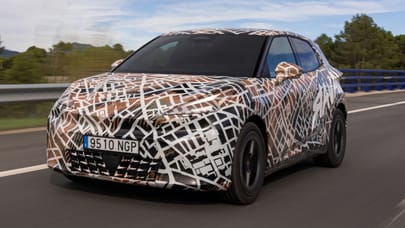
Top Gear’s guilty pleasures: the Vauxhall Calibra Turbo 4x4
Ours is not to reason why, ours is to… buy flawed Nineties coupes with pride
Confession: I have never driven a Vauxhall Calibra Turbo 4x4, which of course is almost comically unimportant. And yet despite having never driven a Vauxhall Calibra Turbo 4x4, the desire to own and run one has persisted long after wisdom and logic have taken the last train back to Sensibleville.
We’re on a different train line today and departing this increasingly tortured analogy takes us to the dawn of the Nineties and the launch of the big, mass-market coupe. First launched in 1989, the Calibra was the best-looking of them all (*cough* Ford Probe *cough*), designed by the same man who did the Opel GT from the Sixties. Herr Schnell, who sadly passed away last year, cited this Calibra has his favourite ever design.
Pretty, but pretty slippery too. Forgive us for going full Chris Goffey here, but when launched, the entry-level 2.0-litre 8v Calibra was the most aerodynamically efficient mass-production car in the world. Of course nobody wanted the 2.0-litre 8v Calibra, they wanted at least the 16v car – the fabled Cosworth-fettled ‘red top’ engine. That had around 150bhp sent to the front wheels. Yup, that’s the sound of understeer, based as it was on the MkIII Cavalier.
And more than that, they (and, me, unimportantly) really wanted the 16v Cosworth-fettled ‘red top’ with a socking great KKK turbo strapped onto its flanks and forged pistons slotted inside. The Turbo 4x4 arrived in 1992, with a very healthy power boost up to 201bhp and 207lb ft of torque, delivered to all four wheels via a six-speed gearbox.
It could accelerate from 0-60mph in 6.4secs while flat out, you’d be looking at the scary end of 152mph. Although, mistreat the Turbo and you’d also be looking at the scary end of some big repair bills. At least according to the owners' forums.
As with anything, the actual turbo needed just a wee bit of additional care – cooling it down properly, allowing the car to idle for a fraction when you’ve stopped etc. The transfer box – the bit that shuffles power around – needed a touch more maintenance. Like keeping the tyre tread within 2mm of each other and rotating the wheels. Frequently. Probably good practice to change fluids too. Frequently.
Seems like a lot of trouble for an old Vauxhall, right? Additional maintenance and perhaps the constant fear that if you miss any of those intervals there’s a chance things might go pop. The notion that underneath it all fundamentally remains a MkIII Vauxhall Cavalier which hasn’t gone down in history as one of the car world’s high points. While inside is a sea of uninspiring plastic and Nineties Vauxhall ergonomics.
And yet. And yet. After more than 30 years the Calibra remains a really good looking car. The turbo, rare and prickly as it is, has character. It has a very cool name. It has proper DTM pedigree. It’s really fast, even by today’s standards, and if you’re clever, no doubt there’s a way to iron out those foibles and massage out a little more power (that engine was fit for motorsport). Yep, still want one.
Top Gear
Newsletter
Thank you for subscribing to our newsletter. Look out for your regular round-up of news, reviews and offers in your inbox.
Get all the latest news, reviews and exclusives, direct to your inbox.
Trending this week
- Long Term Review
Life with a 500bhp BMW 550e: do you really need an M5?







